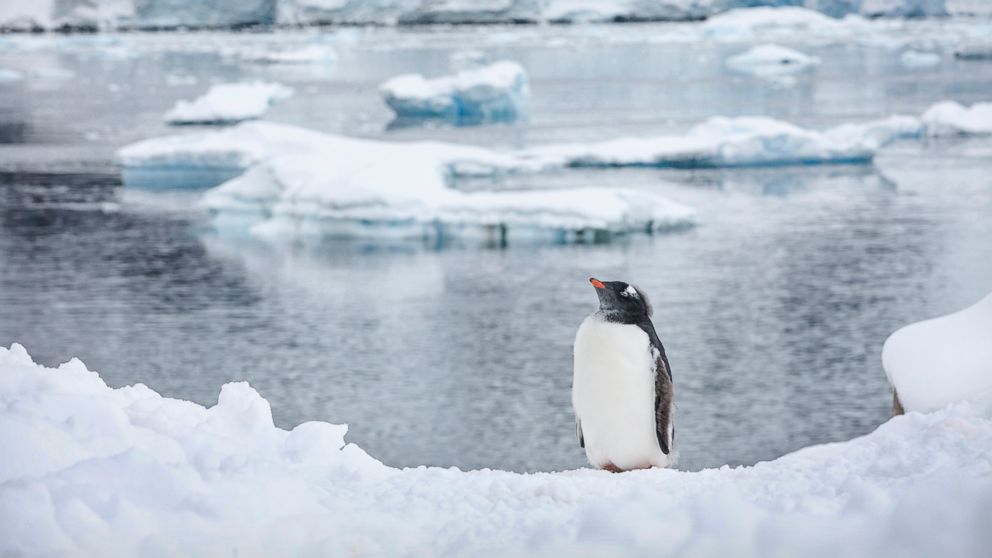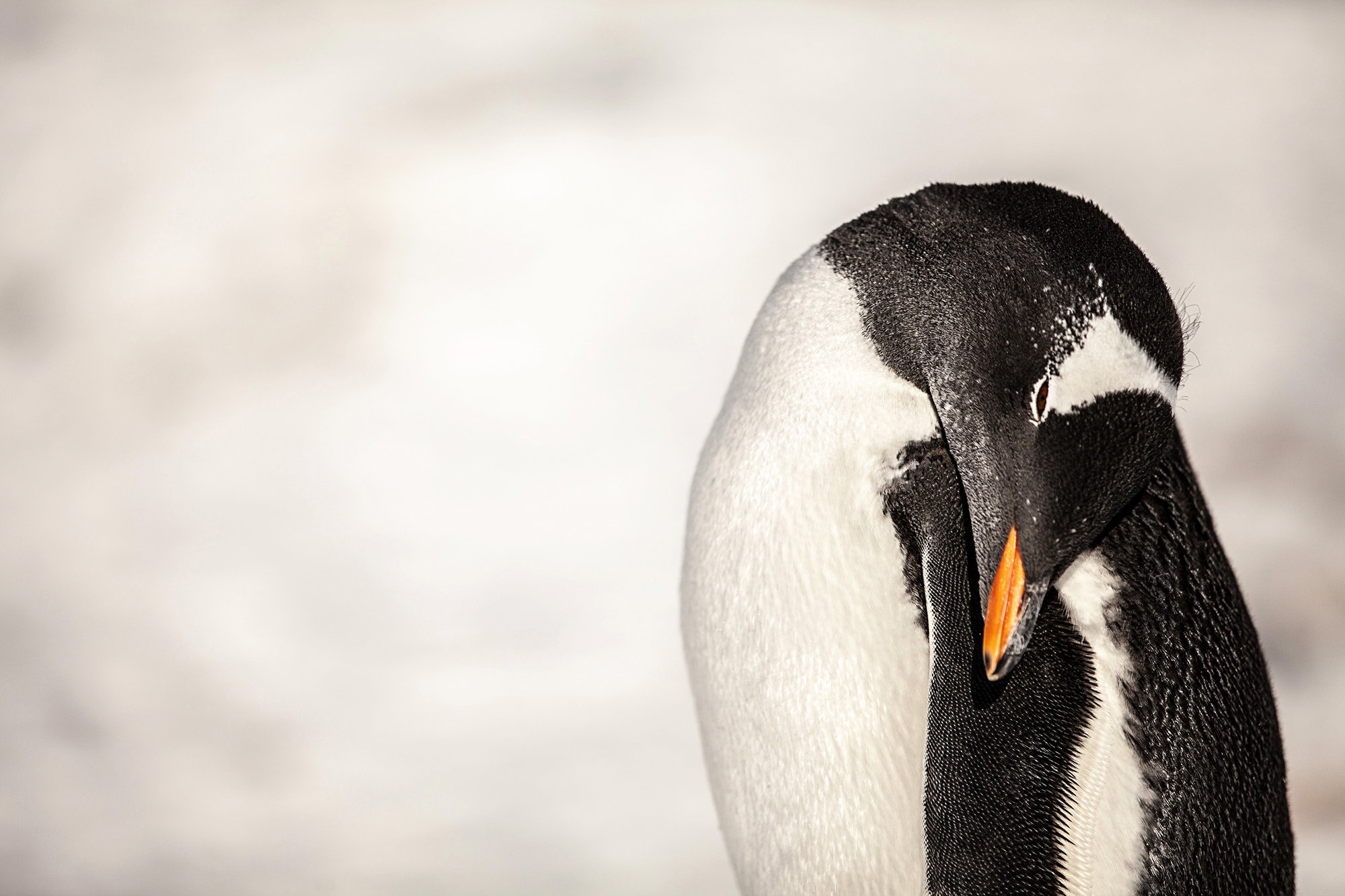Why Some Penguins Thrive in Climate Change
Rapidly changing habitat means species need to be adaptable.

— -- Penguins are on the front line of climate change, as rising global temperatures melt the ice the iconic and lovable creatures call home.
Scientists who count the birds are finding that penguins are beginning to feel major impacts from the drastic changes to their habitat.
But, perhaps surprisingly, the breeding populations of three brush-tailed species of penguins inhabiting the Western Antarctic Peninsula, where the temperatures are warmest, are not all falling as the ice is quickly melting.
"We know two of the three penguin species in the peninsula, chinstrap and Adélie, are declining significantly in a region where, in the last 60 years, it's warmed by 3 degrees C. (5 degrees F.) annually and by 5 degrees C. (9 degrees F.) in winter," said Ron Naveen, the founder of Oceanites, a U.S. based non-profit and scientific research organization. He oversees the Antarctic Site Inventory which monitors penguin populations.
A third species, however, has not been losing numbers and in fact has even been expanding its range.
Counting penguins in the wild is a complicated art. Naveen's team makes repeated visits every year to the Antarctic Peninsula from November to February when egg-laying and chick creching are at their peak.
Since 1994, he has conducted 1,421 visits to the peninsula and collected data from 209 sites.
Naveen and fellow penguin counter Heather Lynch of Stony Brook University say the warming climate and the consequent loss of sea ice are contributing to the decline in Adelie and chinstrap, because the two species are dependent on the ice.
Kerry Calls Climate Change a 'Weapon of Mass Destruction'
Broad Concern about Global Warming Boosts Support for New EPA Regulations
With New Rules, Obama Climate Change Fight Heating Up
Warming temperature is only one part of the whole story, however, according to the Naveen.
"There are a number of possibilities," he said.
Adelies and chinstrap nest primarily near the ice and rely on krill as their main food source. These shrimp-like vertebrates live underneath the ice, feeding on the algae that grows there. As the ice retreats, the krill disappear.

Other factors such as commercial overfishing and the expanding population of humpback whales, which also feed on krill, may also contribute to the loss of their main food source.
By contrast, gentoo penguins, the third of these species, are expanding both in numbers and in geographical range, according to Naveen and Lynch's research. There are an estimated 387,000 gentoo breeding pairs and their populations are moving southward along the peninsula.
"Gentoos are an open water species and can move southward as the declining ice concentration makes new habitat available to them," Lynch said.
Naveen uses simple tools to conduct his field work -- a handheld counting device known as a tally counter, a pencil, and a notebook -- and combines the data with Lynch's work with remote sensing to ascertain as complete a count as possible.
Lynch analyzes hi-res satellite images to help her map out and analyze contours of breeding colonies, look at biological and physical data sets to determine breeding pairs, and assess breeding populations in remote places too difficult to get to, such as some locations in the South Sandwich Islands.
The team's combination of field work and remote sensing allowed them to get the first site-wide inventory of Penguins at Deception Island.
For example, Naveen found 79,849 breeding pairs of chinstrap penguins, including 50,408 breeding pairs at Baily Head.
That 2012 census, combined with data from Lynch's satellite imagery, also indicates the chinstap population has declined 50 percent as compared to previous population estimates conducted in 1987.
Monitoring penguin populations in the western Antarctic Peninsula, how they shrink and grow in response to changing conditions, not only provides critical clues to how to manage the environment down there, but perhaps for us as well, Naveen said.
"Are they sending us a message we should be thinking about?" he said. "Are we canaries in the coal mine?"



